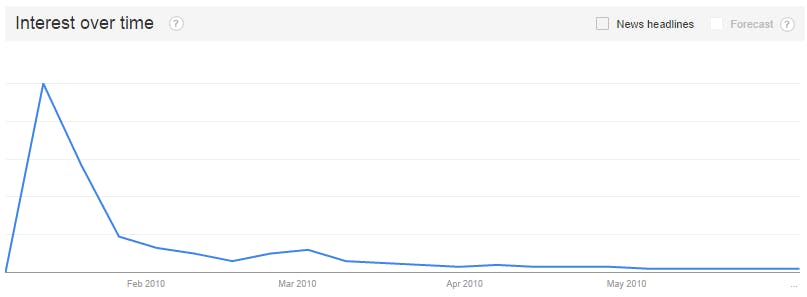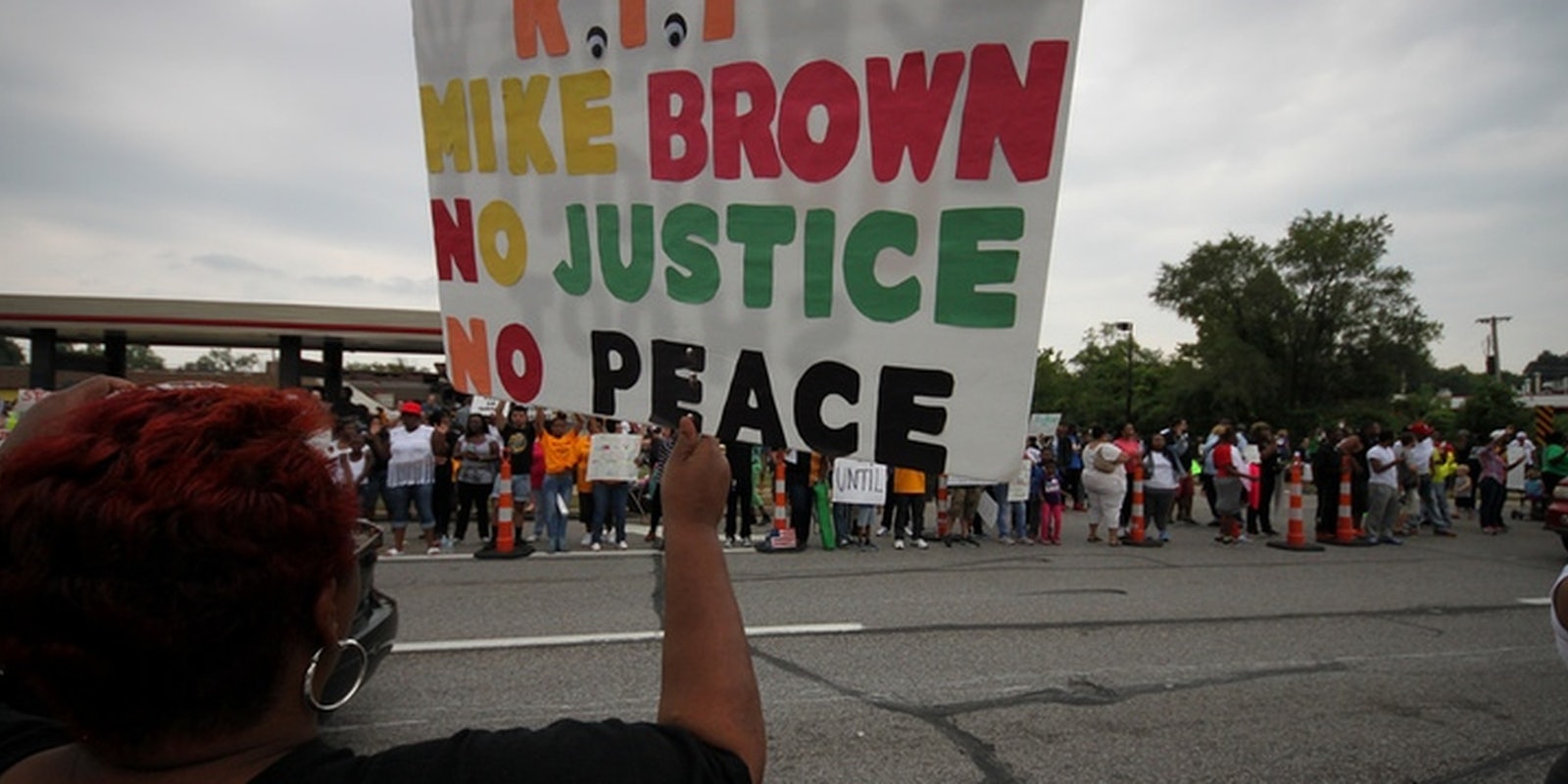Look at any news website this week, and you’ll find it saturated with stories about Ferguson, Mo.—and for good reason.
The explosive story of Michael Brown’s death at the hands of a white cop has sparked a wave of anti-police protests, an outpouring of unrest on social media, and a national debate about race and the militarization of police.
In time, however, the events in Ferguson will recede from the headlines. The tweets and Vines will stop. The livestreams will go dark. And most Americans will simply move on to something else. The question is: When?
In the past few years, as social media has shortened society’s attention span, numerous natural disasters, terrorist attacks, and fatal shootings that occupied the spotlight for weeks and inspired chants of “We will not forget” were, in fact, eventually forgotten by most observers.
Take, for example, two natural disasters that occurred in the early part of this decade. On January 12, 2010, a magnitude 7.0 earthquake devastated Haiti, striking just west of the city of Port-au-Prince and killing hundreds of thousands of people. This Google Trends graph illustrates the interest in the story as measured by Google searches:

As you can see, search interest peaked between January 10-16, 2010, as the earthquake hit and the immediate effects unfolded. Interest dropped off sharply in late January, barely two weeks after the seventh-deadliest earthquake in human history. Google searches lost more steam in February, picked up a bit in early March as rescue efforts continued, and finally petered out in April.
A little more than a year later, the world watched as a magnitude 9.0 earthquake struck Tōhoku, Japan, killing over 15,000 people and generating a massive tsunami that caused a meltdown at the Fukushima Daiichi Power Plant. Reactors overheated and began leaking, leading the International Atomic Energy Agency to rate the incident as a Level 7, or “major,” accident. It was only the second time the IAEA applied this label; the first was for Chernobyl in 1986.

Google searches peaked right after the earthquake and tsunami, between March 13-19, but they dropped off significantly a week later. Search activity slowly lost steam in April and May, hung in there in June and July, and was almost gone by August. This past April, more than three years after the initial earthquake, Californians were preparing to test the waters of the West Coast for radioactive cesium stemming from the nuclear meltdown.
These 2010 and 2011 examples look like the beginnings of a pattern: major news events, even ones that wreak untold physical and emotional damage, slip off the front pages and homepages within two to four months. Beginning in 2012, however, international incidents seemed to take even less time to fade away.
Hurricane Sandy was one of the most feverishly tweeted American weather incidents of the past decade. The hurricane, which formed on October 22 and dissipated on November 2, received relatively little attention as it first took shape. Search and social media activity skyrocketed, however, when the hurricane struck the media epicenter that is New York City on October 29. There was continued attention as the hurricane dissipated, likely owing to the countless cleanup, recovery, and rebuilding stories. But by mid-November, the attention, like the winds, had died down.

The Boston Marathon bombing on April 15, 2013, represents another example of this trend. This search activity graph shows that interest peaked on April 16 (the day after the bombing), experienced a sharp drop, spiked on April 19 when the manhunt for the bomber began, and then saw a gradual decline, until there was barely any search activity by April 27.

On May 20, 2013, an EF5 tornado struck Moore, Oklahoma. Peak winds were estimated at 210 miles per hour, and 24 people were killed. The damage was estimated at $2 billion, making it the third-costliest U.S. tornado in financial terms. Yet as this search activity graph indicates, the Internet’s attention span was mercilessly short: a peak on May 21, the day after the tornado hit and verified damage pictures began dominating cable news; a steep drop-off immediately afterward; and barely any discussion by May 31.

These days, the few events that do captivate the public generally have one of two crucial ingredients: mystery or injustice. Mystery is what kept the disappearance of Malaysia Airlines Flight 370 in the news for so long. Search interest peaked in mid-March and finally dropped off in early June. The destruction of Malaysia Airlines Flight 17 over Ukrainian airspace on July 17 led to renewed interest in Flight 370’s disappearance, which accounts for the slight bump in the middle of July. Overall, this is a surprisingly long lifespan for a foreign news story in an era where even a terrorist attack on American soil generates less than two weeks of sustained interest.

For an example of injustice, consider the killing of Trayvon Martin on February 26, 2012. As you can see below, search interest appears in the form of two “waves.”

The first wave followed the shooting itself. Interestingly, there was barely any attention in the immediate aftermath. People became aware of the story in mid-March, at which point interest jumped significantly. The peak of the first wave of search activity came at the end of March. After a decline in April and a few subsequent bumps in 2012, activity grew quiet.
The second wave arose shortly after the trial of George Zimmerman, Martin’s killer, began on June 10. Search activity in the second wave peaked right after the jury acquitted Zimmerman on July 13, with interest in the story practically doubling the level of the first wave’s peak. A month later, however, barely anybody was searching for the story.
The longevity of the Trayvon Martin story is slightly misleading, because it was drawn out over the course of two years with separate peaks and a near-total dearth of activity in between. Even so, the story’s resurgence in 2013, and the parallels being drawn to it in the wake of Michael Brown’s killing, suggest that it is attaining a permanence in our natural consciousness that Haiti, Fukushima, and even Boston did not.
As this graph indicates, Michael Brown’s death and the protests that it inspired are still generating intense search activity, although it appears to be declining relative to its August 15 peak.

The events in Ferguson combine the outrage and injustice of the immediate incident with the ominous, persistent themes of racism and police militarization. Michael Brown’s personal story and the demonstrations in his name will likely recede from the news in a few weeks, but, like the disturbing implications of the Trayvon Martin killing, the behavior of the authorities in Ferguson raises broader questions that will surely color future breaking news stories for years to come.
Photo via Shawn Semmler/Flickr (CC BY 2.0)


